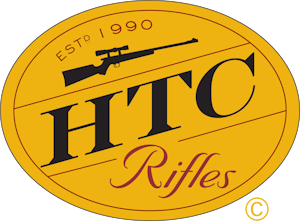High-Tech rifle provided exceptional accuracy, especially for a .340 Weatherby.
BY COL. CRAIG BODDINGTON USMCR
I write, and have written, about a lot of different rifles and cartridges. The most obvious reason is that I'm a gun writer, and I have to have things to write about. Unfortunately, this can lead to confusion. I'm often asked what I really like. That isn't an easy question to answer. I'm every bit as much a rifle nut as I am a writer, and I like and admire a fairly broad spectrum of sporting rifles.
My personal tastes run toward classic and traditional lines, but I don't always write about rifles ideally suited to my needs or preferences. Virtually any rifle that does what it is supposed to do will earn my respect, but I don't write about guns with the idea that you should run out and buy one. You: and you alone, must decide what type of rifle and cartridge best suits your needs. Most of you probably know, for instance, that I'm a great fan of the timeworn old .30-06, but I also have several .300 magnums in both Winchester and Weatherby flavors, and recently I've done a lot of work with the very fast .300s, both the .308' .378 Weatherby and Lazzeroni's 7.82 Warbird. Which do I really like' Hell, I like 'em all. You have to decide what performance characteristics you like.
I have also written, and firmly believe, that the best "all-around; choice for all North American hunting, including the big bears, is the .338 Winchester Magnum. The only problem with the .338 is that it's slow. You can push the lighter .33-caliber bullets pretty fast, but their low sectional density limits their penetrating qualities, and this same low sectional density limits the ballistic coefficient. For general use in a .33 caliber, I like bullets of no less than 225 grains, and if large, tough game is potentially on the agenda, I like 250-grain bullets. With the case capacity of the .338 Winchester Magnum, velocity is fairly low with these heavy bullets, and the resultant trajectory falls off pretty quickly. Most factory loads for the .338 are rated at 2,650 feet per second, and it's very difficult to get handloads much faster than 2,700 feet per second. This puts the .338 in roughly the same class, trajectory wise, as the .30-06 with its classic 180-grain load. That ain't bad, but it isn't a true long-range cartridge. If you believe in the frontal area and sectional density of the .33-caliber, as Elmer Keith did and as I do, then the easy answer is a faster .33.
There are several choices: .330 Dakota, 8.59 Titan (Lazzeroni), .338 Excalibur (A-Square), and more. All of these are good, but the most available and most obvious answer is the .340 Weatherby Magnum. It's a great cartridge, no doubt about it. Depending on the rifle, whose ammo you use, or how you load for it, the .340 Weatherby will beat the .338 by about 200 fps, bullet weight for bullet weight. That ain't hay. In terms of trajectory, it makes the .340 about as flat-shooting as the .300 Winchester Magnum. So why bother with the .338? The problem with the .340 Weatherby Magnum, for most of us, is recoil. You start approaching 2,900 feet per second with a 250-grain bullet, and you're into a whole different recoil sensation than the .338 or any of the hot .30s offer. Yes, I know, we're all macho big-game hunters and we love recoil-but the .340 Weatherby Magnum and all the other fast .33s just plain hurt, or at least they hurt me, and I'm not ashamed to admit it. I used a Weatherby Mark V in .340 Weatherby Magnum quite a few years ago. The rifle shot well, and its downrange performance was awesome. 1 took it to Africa a couple of times and I shot both brown bear and grizzly bear with it. Wonderful! Except that it was never fun to shoot. In Africa, where I was shooting it a lot-in shirtsleeves and from a wide variety of rests and positions-it finally dawned on me that it was not only not much fun to shoot, but I also wasn't shooting it as well as I would shoot a rifle that kicked a whole lot less. So, while I have the greatest respect for the .340 as a hunting cartridge, 1 decided it was too much of a good thing for me, and I quit using il.
A couple of years ago, at Ed Rice's Denyer show, I ran into Colorado Springs gunmaker Rich Reiley. Reiley's outfit, High-Tech, offers the full range of gunsmithing services, including making rifles to the customer's specifications-but what Rich really likes to build are hunting rifles that are both lightweight and powerful. His favorite cartridge is, you guessed it, the .340 Weatherby Magnum. He insisted on letting me play with one of his rifles. That I didn't mind; he made a fine-handling, smooth-operating rifle, and from what I could see, he was doing an exceptionally good job. I did try to talk him into sending me some other caliber, but he insisted. So I was back in the .340 Weatherby business, this time I liked it!
The High-Tech .340 is the company’s "Shadow" model, essentially meaning a black synthetic stock. The Falcon model uses· a camouflage synthetic stock, while the Kodiak is its large-caliber rifle with open sights. Action and caliber are of the customer's choice in all three models. These days it's more and more difficult to define a custom rifle. After all, very few gunmakers actually start from scratch with raw materials. Yes, a couple make their own barrels, a very few make their own actions, and quite a few either lay up their own synthetic or start from scratch with walnut blanks. But almost all "source" at least some parts from other suppliers, so there's a very indistinct line between "custom'" and "customized" -genuine custom work, and simply a skillful assembly of parts. High-Tech does not make actions, barrels or stocks. On this particular rifle the barrel is Lilja match-grade stainless with a one-in-10 twist. The action started life as a Remington, and the stock is Pacific Research. So on first blush one might think this rifle is merely an assemblage, but it is not. This is custom work, and extremely well thought out from muzzle to butt.
Rich Reiley' s primary background is in machining, and his credentials include instructing at Colorado's excellent gunsmithing school. There's a tremendous amount of metalwork in this rifle. The 23 1/2-inch barrel is fluted and nicely tapered, and the last two inches are fitted with HIGH-Tech's own muzzle brake for a total barrel length of 25 1/2 inches. The barrel has been cryogenically relieved (the "deep freezing" that tends to smooth the metal and extend barrel life). The action has been trued up and the bolt helically fluted. The Remington cocking piece and safety has been replaced with a three-position Model 70 type safety, and the Remington extractor has been replaced with larger Sako-type extractor. Action screws are replaced with Allen-type screws. The barrel and action are coated in black-matte Teflon. The first three inches of the barrel are bedded; the rest is free-floated. Pacific Research is one of the best Synthetic stocks I know of, and the style Reiley selected is a perfect American Classic style-very straight with a good cheekpiece and excellent checkering.
The rifle handles like a dream and comes up perfectly ,with the scope well aligned. The balance is excellent, and the weight is very comfortable at about 7 1/2 pounds with scope. Except this not a .280; it's a .340 Weatherby Magnum, and at that light a weight it was with some trepidation that I took it to the range! Boddington says the High-Tech .340 Weatherby is the most comfortable-shooting rifle in this power range he has ever fired. That, too, has been an extremely pleasant surprise. Although the weight is very light for a .340, the muzzle brake proved extremely effective in dampening recoil, and of course the straight stock contributed as well. This is the most comfortable .340 Weatherby I have ever fired. Sure, it kicks. I used Swift 250-grain and 275- grain bullets, both loaded hot. You don't turn loose that kind of power without recoil. But it's not unmanageable, and I'd rate it more comfortable to shoot than many rifles of similar power that weigh 30 percent more. Functioning was also superb. The action has clearly seen a lot of work; it's very smooth, and feeding is perfect. The trigger pull is set to a very crisp and clean three-pound let off. Accuracy was also superb. Groups were not impressive with Weatherby factory ammo, but with handloaded Swift bullets the rifle straightened right out and performed like a champ, shooting sub-inch 100-yard groups with no hiccups.
Now, in case you haven't guessed, this is a rifle that I really like. Rich mounted my 3.5-lOX Leupold in Talley rings. With this kind of scope, this rifle is a perfect "do anything, go anywhere" hunting rifle. Although needlessly powerful, it has the accuracy and trajectory for hunting sheep, antelope and deer anywhere in the world. It has the power and trajectory for hunting elk and moose anywhere in the world. It has the power for hunting big bears anywhere in the world, and it's about as weatherproof as a rifle can be. I like so well, I've been agonizing over whether I should buy it or send it back. Ultimate!\', I decided that, as much as I like it, this rifle isn't for me. Why? I have gotten to the point where I don't like to hunt with muzzle brakes. This is a good brake, not only effective but less noisy than most-but there is always an increase in noise with muzzle brakes, and it's usually worse for bystanders than for the shooter. I rarely hunt alone, and I'd just as soon not subject my guides and hunting partners to the extra blast. I've been on the fence on this subject, but last fall a hunter I was guiding had an accidental discharge with a muzzle-braked rifle that was very near my ear, and henceforth I'll avoid them. That doesn't mean you should.
This is the great dilemma: If you want a rifle with performance in the .340 Weatherby class and you want the rifle light and you don't want to be kicked into next week, a good muzzle brake is the only option I know of. It depends on how and where you hunt, too. In Africa there are usually trackers and PHs nearby, so I'm dead-set against muzzle brakes in that setting. In much North American hunting we're by ourselves, so it doesn't matter; and in most mountain hunting there's plenty of time to caution guides and partners. Muzzle brakes work, and you have to make your own decision about them. As regards this rifle, everything works-perfectly. The brake works, too. The rifle would work just as well without it-but I wouldn't have a rifle of this power and weight without a brake' So this particular High-Tech rifle isn't for me. But it is one of the most impressive synthetic-stocked u, hunting rifles I've ever used. I wouldn't be surprised if you haven't heard of Rich Reiley or High-Tech-yet- but I think you will.








